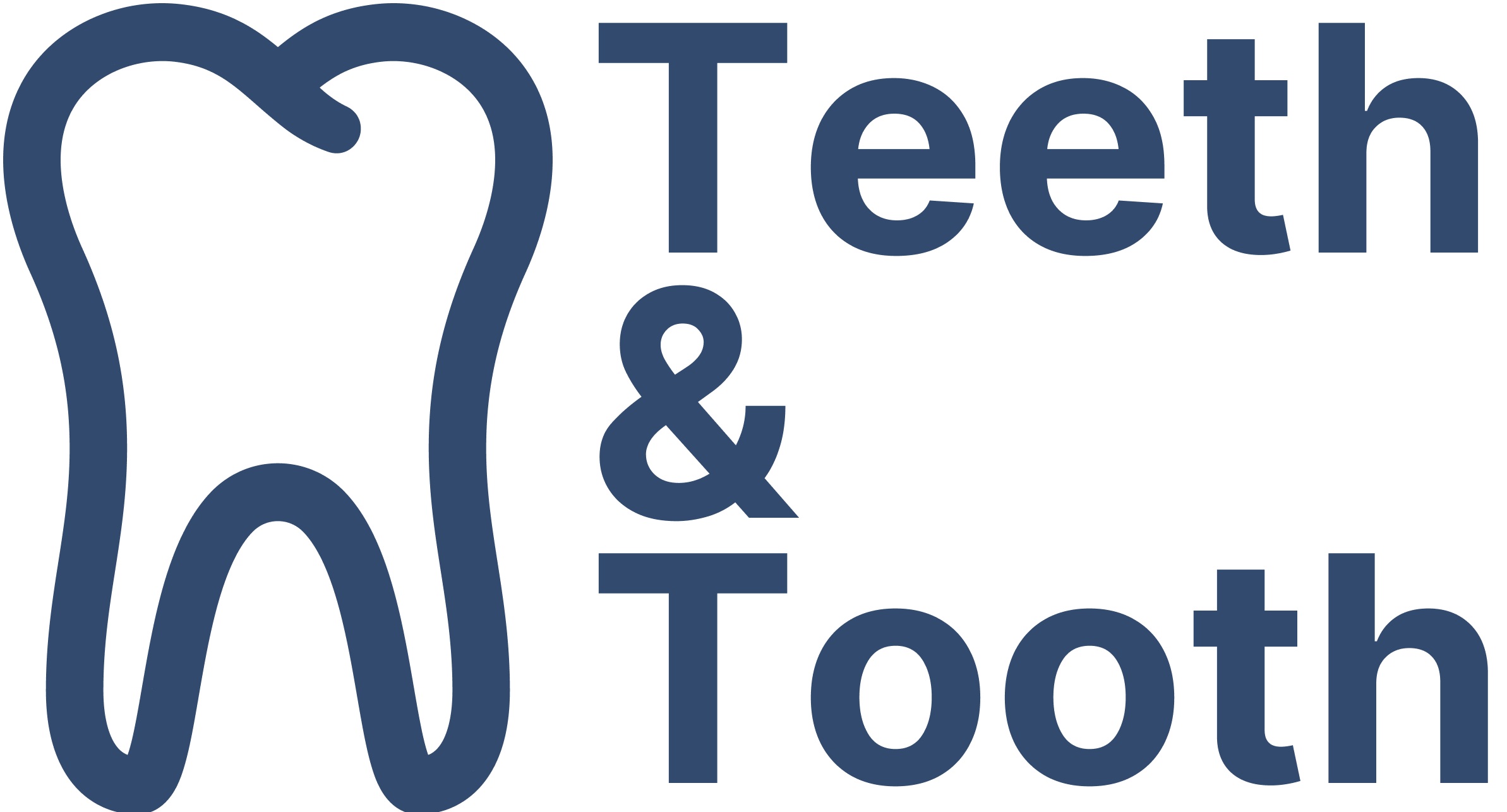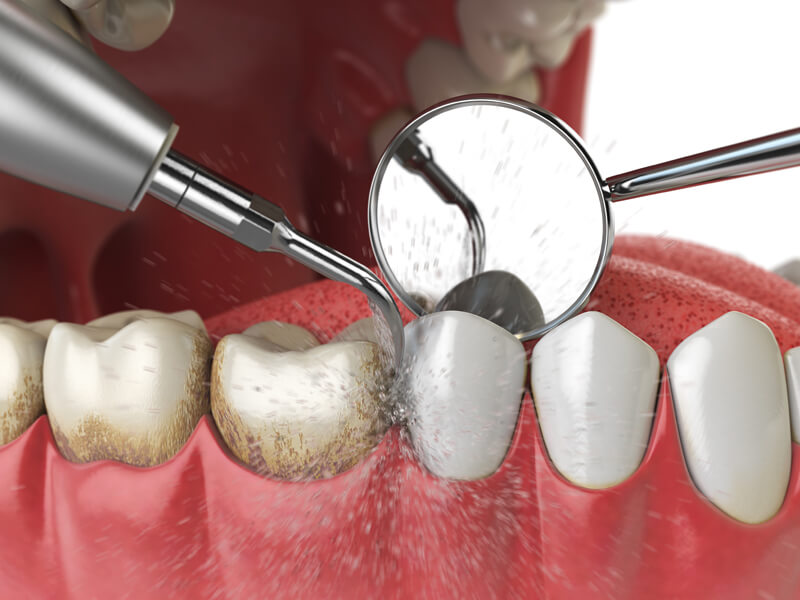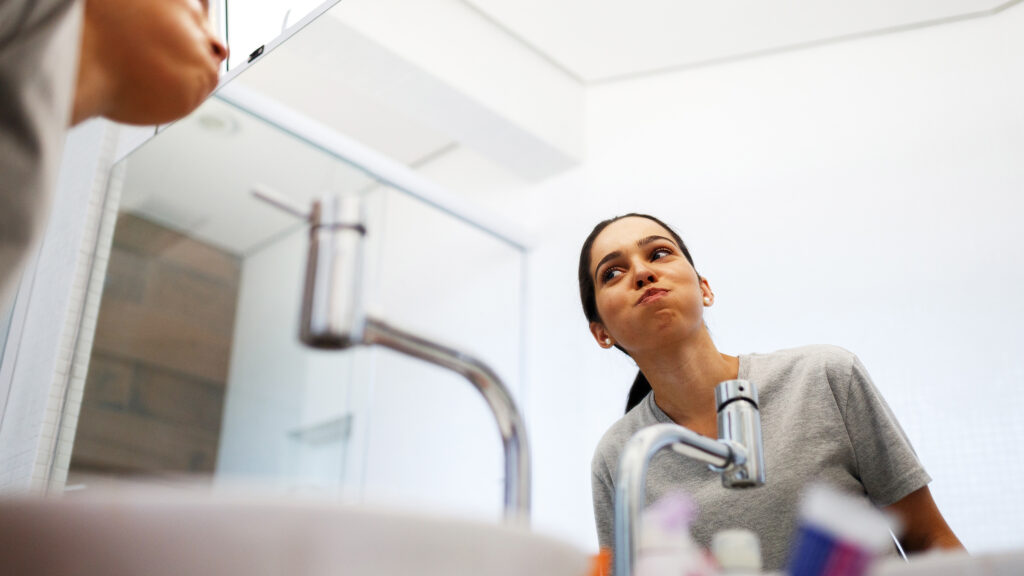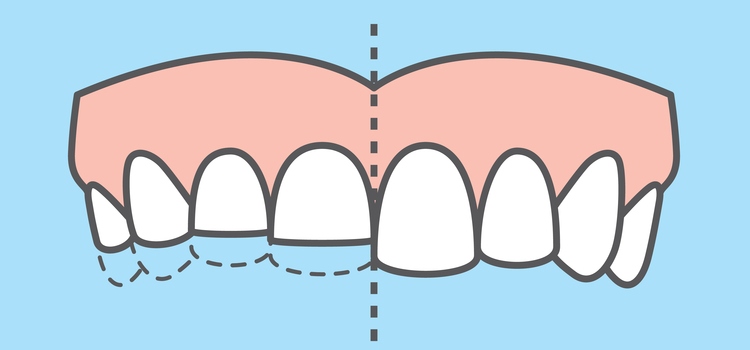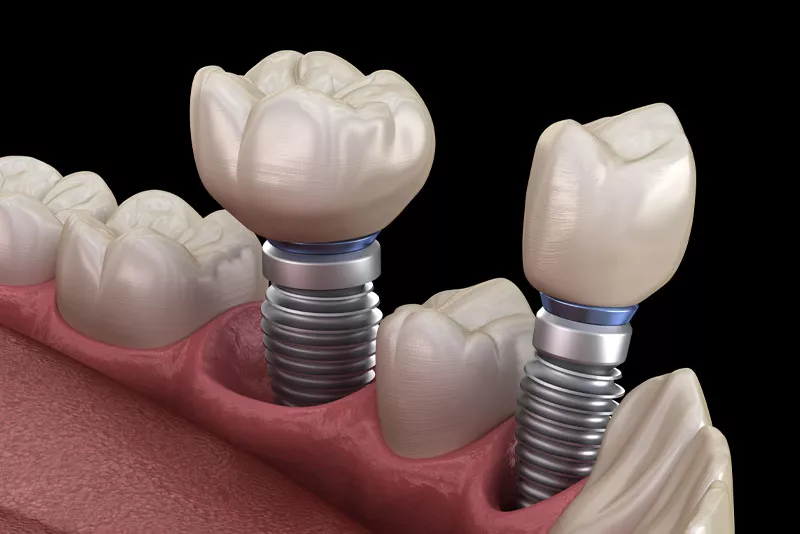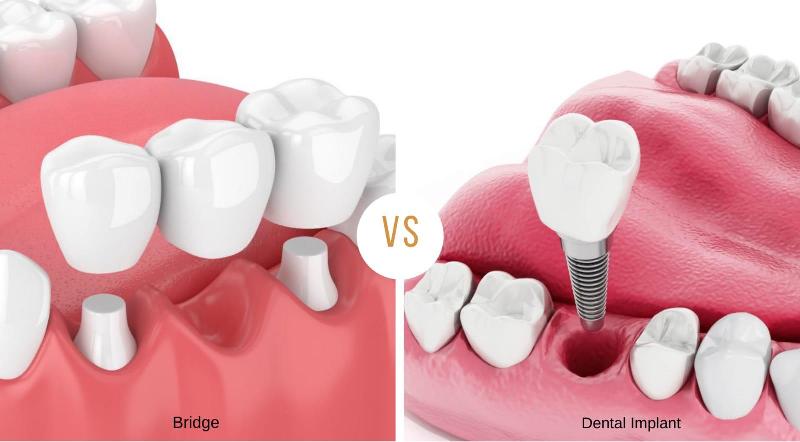Are you tired of seeing those unsightly white or yellowish deposits on your pearly whites? If you’ve been noticing these stubborn spots on your teeth, you’re not alone!
These stains are calcium deposits, also known as dental calculus or tartar. These hardened mineral accumulations not only affect the appearance of your teeth, but they can also lead to a host of dental problems such as bad breath, gum disease, and tooth decay.
There are several ways to get them off your teeth. However, if you are unable to remove these pesky calcium deposits at home, your dentist is able to remove them through a process called scaling.
In the rest of this article, we will explore the reasons behind the calcium deposits and take a deep dive into the different methods available to remove these unwanted deposits. Say goodbye to those pesky calcium deposits and hello to a more confident you!
What Are Calcium Deposits (Tartar)?
In order to prevent calcium deposits from forming, it is important to first understand the causes behind their formation. These calcium deposits are essentially hardened accumulations of calcium phosphate that form on the enamel, the outer covering of a tooth.
To protect and restore the enamel, the body is constantly supplying saliva with calcium and phosphate, the two main minerals that make up the enamel. However, when plaque absorbs the minerals and other substances found in the mouth, it forms a hard, yellowish calcium deposit on the enamel.

This is akin to putting paint (plaque) on a slab of wall (enamel). When too much paint is left on the wall, lumps (calcium deposits) will inevitably harden and form on the wall.
Calcium deposits can be further categorized into two types.
- Supragingival calculus: This type forms above the gum line and is generally easier to spot. It often appears as a yellow or brownish substance on the teeth.
- Subgingival calculus: This type forms below the gum line and can be more difficult to detect. It is typically darker in color due to the presence of blood components from the gingival crevicular fluid.
If left untreated, it can lead to a host of dental issues including:
- Discolored appearance of teeth
- Cavities
- Periodontal diseases such as periodontitis and gingivitis
- Infection
- Tooth loss
How to Remove Calcium Deposits?
Calcium deposits are often the result of poor oral hygiene—improper or irregular brushing of the teeth. Once formed, they are virtually impossible to be removed with brushing. Instead, a dentist will require a scalar to scrape away the hardened calcium deposit.
During scaling, a metal dental scaler or an ultrasonic scaler is used to physically remove the deposits that are stuck to the teeth. While the former uses a hook to scrape away the plaque, the latter uses vibrational energy to dislodge the calcium deposits. Scaling is often followed by polishing, a procedure which removes any remnants of plaque or tartar on the teeth while making it smooth and shiny.
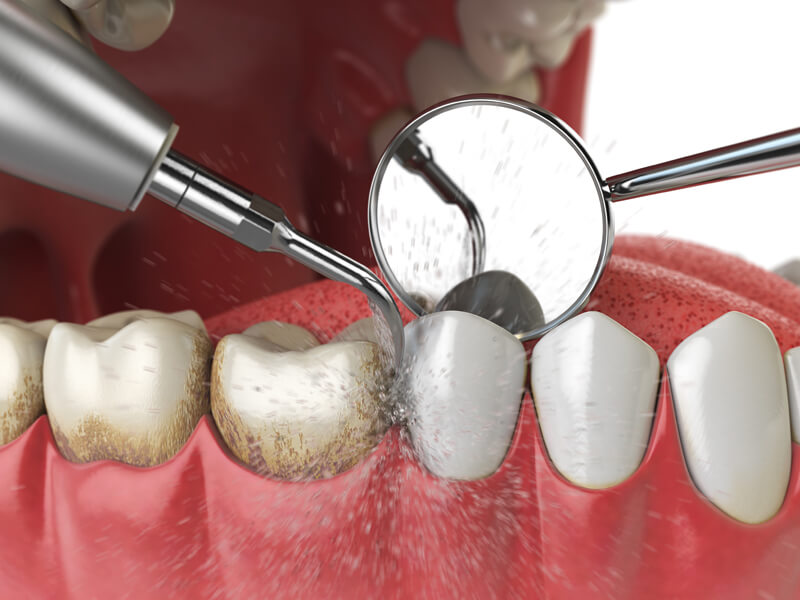
Apart from scaling and polishing, air abrasion is also a recommended dental procedure used to remove those pesky deposits. Air abrasion work by using pressurized air to blast a stream of particles — silica, aluminium oxide, or baking soda — towards the tooth, removing any calcium deposits and stains that have build up on the tooth surface. Over the years, air abrasion has become a popular alternative to scaling as it generates minimal noise, making it the ideal procedure for young children or adults who are afraid of the sound that a scalar makes.
In cases of severe buildup or advanced gum disease, your dentist may recommend a deep cleaning procedure called root planing to thoroughly clean the tooth roots.
Several home remedies touting to remove tartar have sprung up over the years. This include the brushing of teeth with baking soda, the gargling of a vinegar and salt water mixture, and oil pulling with coconut oil. While these remedies may help to remove stains and soften the calcium deposits, their effectiveness in removing tartar is minimal.
How to Prevent Calcium Deposits?
The removal of calcium deposits can be an expensive and tedious procedure as it requires a visit to your dental clinic. As such, The best thing to do is to prevent the formation of calcium deposits, and here are a few things you can do to achieve it:
- Brush regularly and properly. Brush your teeth at least twice a day using a fluoride toothpaste and a soft-bristled toothbrush. Ensure you brush for at least two minutes and use proper brushing techniques to effectively clean all surfaces of your teeth.
- Use an electric brush. Various studies have concluded that electric brushes are more effective at removing plaque than manual brushes. This is due to the vibrating or rotating bristles which allow for more micro-movements and a more effective cleaning of the teeth.
- Use a mouthwash. Ingredients present in most big brand mouthwash work well to kill bacteria that causes plaque, reducing the risk of a plaque buildup. An antimicrobial mouthwash is recommended as it is highly effectively in reducing the unwanted backteria in your mouth.
- Floss daily. Flossing is essential for removing plaque and food particles from between your teeth and along the gum line. This can help prevent the formation of calculus. If you find traditional floss difficult to use, consider using interdental brushes or a water flosser as an alternative.
- Rinse after a meal. Drinking water or rinsing your mouth after a meal can help to wash away food particles and bacteria, reducing the likelihood of plaque and calculus buildup. Water also aids in maintaining a healthy saliva flow, which is essential for neutralizing acids and remineralizing tooth enamel.
- Visit your dentist every three to six months. In spite of regular brushing and flossing, plaque may still linger in certain areas of your teeth. Regular visits to the clinic allows your dentist to spot and remove these hidden plaque while keeping you updated on the health of your teeth.
By following these tips and maintaining a consistent oral hygiene routine, you can help prevent calcium deposits from forming on your teeth and ensure a healthier smile.
Takeaway
In conclusion, calcium deposits, or dental calculus, may seem like a persistent enemy in the battle for a healthy, radiant smile. However, by arming yourself with the right strategies, you can successfully keep these unsightly accumulations at bay. A combination of professional dental care and diligent at-home oral hygiene practices is the key to preventing and removing these stubborn mineral deposits.
An ounce of prevention is worth a pound of cure. By staying committed to maintaining proper oral hygiene practices, you can achieve and maintain a brighter, healthier smile, free of unwanted calcium deposits!
